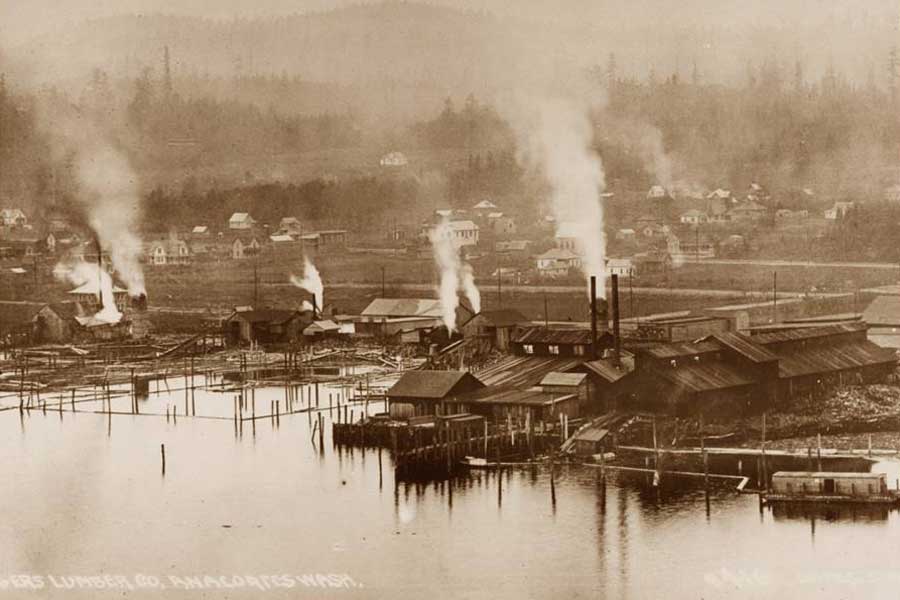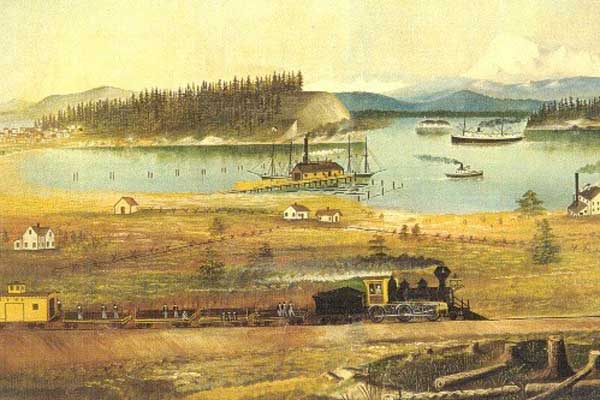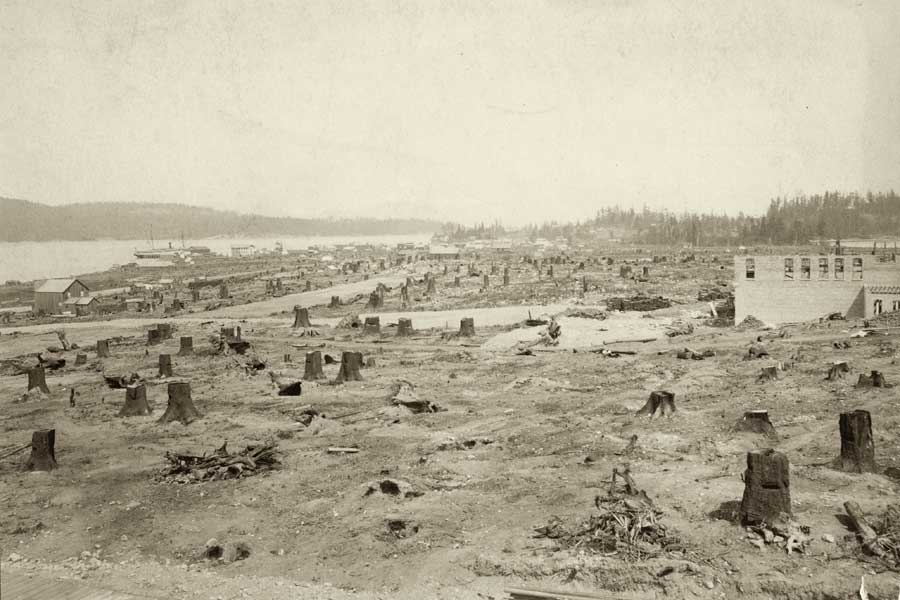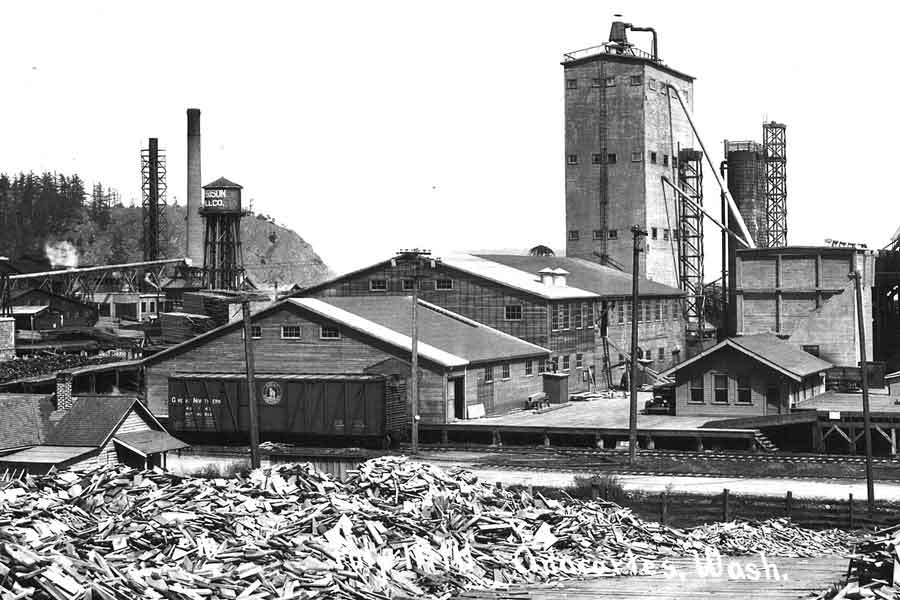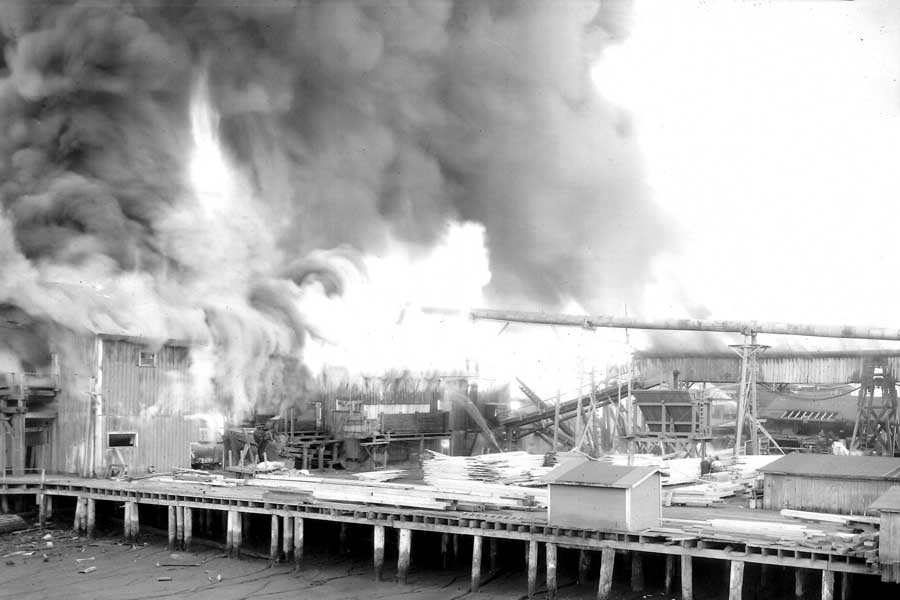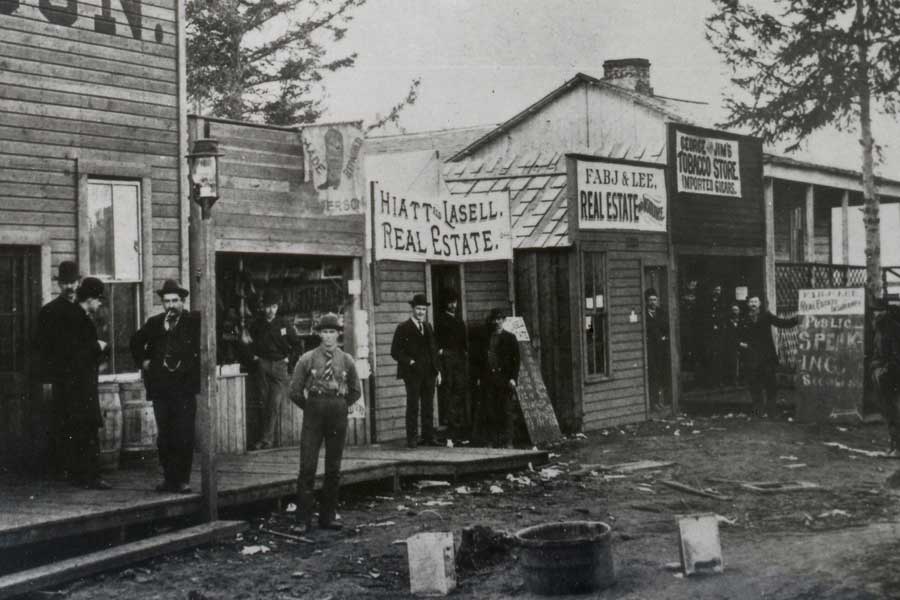Mill Row
How timber built a city of smokestacks
Anacortes transitions from resource extraction to resource restoration
Abundant supplies of local timber gave rise to Anacortes' first industry—wood processing. By the early 1900s, 13 plants lined "Mill Row" along Fidalgo Bay's western shore.
Spurred by the Oregon Land Donation Act of 1850, pioneer settlers moved west. In Skagit County, they found land, plentiful resources, and navigable water highways. Ambition and hard work built a "city of smokestacks." Mills transformed trees into shingles, water pipes, shipping boxes, home- and ship-building materials, wood pulp, and plywood.
The mills' good jobs and marketable products sustained the community for almost a century. Sadly, they also challenged the resilience of the forests and left a toxic legacy along the shore.
Today, however, local community, tribal, and state leaders are cooperating to repair the unintended consequences of industrial growth and restore the marine ecosystem—while also maintaining a diversified economy.
Seeds of growth
Connected to resources and markets via a marine highway, Anacortes was a useful stop for regional traders and explorers. By the 1880s, Griffin lumber camp and mill were operating on Fidalgo Bay, and White's Landing was supplying passing steamboats with wood and water.
A valuable resource
The mammoth Douglas firs and cedars that once dominated Fidalgo Island provided lumber for the first buildings, wharves, and planked streets. By 1904, most Fidalgo timber had been harvested. The trees regrew and were cut again in the 1940s. Conservation easements, today, protect Anacortes forests.
Waste not, want not
Mills cooperated to recycle waste: Morrison Mill supplied waste wood for the pulp mill. In turn, conveyors shuttled pulp "hog fuel" waste to Morrison furnaces for steam to power both mills. Excess pulp bleaching liquid was spread on streets to keep down dust—or pumped into the bay!
Lumber loses steam
Until 1992, lumber meant Anacortes jobs. But changing markets and technologies took a toll: cardboard replaced wood shipping crates; metals supplanted lumber; and cheaper chipboard depressed the market for plywood. Finally, fires, obsolescence, and a national building slump doomed Mill Row.


